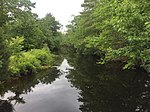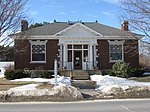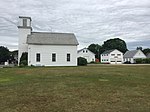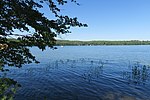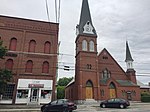Little River (Big River tributary)
New Hampshire river stubsRivers of Belknap County, New HampshireRivers of New HampshireRivers of Strafford County, New HampshireTributaries of the Merrimack River

The Little River is a 4.9-mile-long (7.9 km) river located in central New Hampshire in the United States. Its outflow travels via the Big River, Suncook River, and Merrimack River to the Gulf of Maine, an arm of the Atlantic Ocean. The Little River begins on the west side of the Blue Hills Range in Strafford, New Hampshire. It flows northwest, gaining the outlet of the Willey Ponds, and joins the Big River just north of the village of South Barnstead.
Excerpt from the Wikipedia article Little River (Big River tributary) (License: CC BY-SA 3.0, Authors, Images).Little River (Big River tributary)
New Road,
Geographical coordinates (GPS) Address Nearby Places Show on map
Geographical coordinates (GPS)
| Latitude | Longitude |
|---|---|
| N 43.329722222222 ° | E -71.233055555556 ° |
Address
New Road
New Road
03218
New Hampshire, United States
Open on Google Maps
